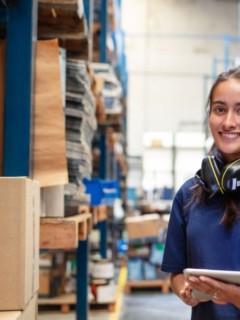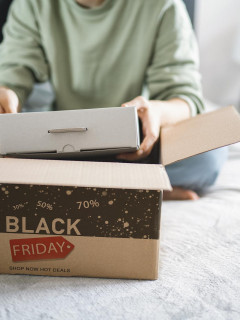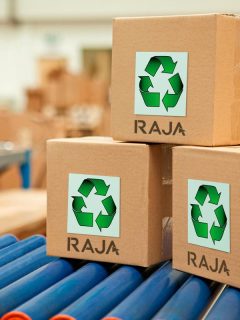Bubble wrap or foam – which filling material is best for your products? The materials are similar in many ways, but also have their own specific properties that you should know about in order to choose the best for you.
Bubble wrap – versatile and popular
Bubble wrap consists of hundreds of tiny air pockets encapsulated in a thick layer of polyethylene. It is this structure that gives the material cushioning and protective properties. It is not surprising that bubble wrap is one of the most popular packaging products for RAJA customers. Bubble wrap is lightweight, affordable and provides good all-round protection.
Bubble wrap is available in different qualities, so you can choose based on how heavy, sharp or delicate the item you want to protect is. The most common and economical is to use bubble wrap with small bubbles on a roll that can easily be cut to the length you want. Choose our environmentally friendly bubble wrap that consists of 50% recycled material. If your products need more protection, we also have bubble wrap with large bubbles.
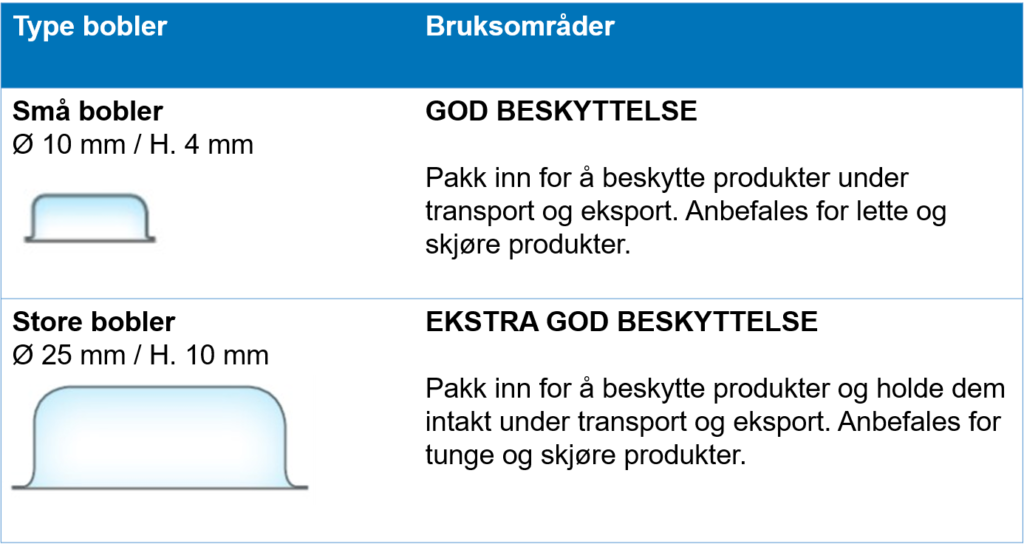
Save time with dispensers, perforated sheets or ready-made bags
Want to save yourself the hassle of measuring and cutting bubble wrap to the right size? Choose perforated rolls, so you can tear ready-made pieces of the same size quickly and neatly instead. This is ideal if you’re packing lots of items of the same size. Bubble wrap in dispenser boxes makes the process even simpler. If you’re sending small items, our ready-made bubble bags could be perfect for you. Sending electronics? Then you should look at anti-static bubble wrap, which stands out in our range with its pink colour. This bubble wrap has anti-static agents added and is ideal for delicate electronic products, such as data equipment or medical equipment.
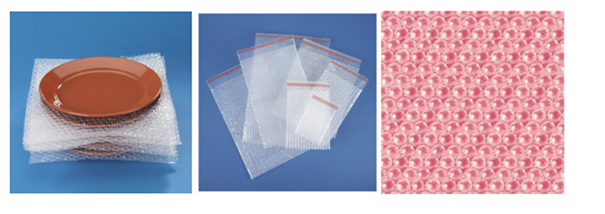
Danger of marks on display products
Be careful if you want to use bubble wrap to protect products with transparent surfaces. The pressure that occurs when the tiny air bubbles are pressed against certain materials can cause small “cell marks” that can be difficult to remove. This sensitivity applies to materials such as polished metal, glass or wood. So if you are sending such products, we recommend that you wrap the products in another material first, for example polyethylene or foam film, before wrapping it in bubble wrap.
Foam film – ideal for sensitive surfaces and products
Similar to bubble wrap, foam wrap is also a protection that is light, flexible and easy to handle. Small air bubbles in the foam provide good cushioning and forming, which gives good protection for the product. Foam wrap is purchased in rolls and cut to the desired size. Buy foam wrap sheets in dispenser bags if you want to save time in the packaging process.
Unlike bubble wrap, you don’t have to worry about foam film leaving marks on painted or varnished surfaces. Use foam film to protect protective surfaces like glass, metal or furniture from scratches and abrasion.
The way foam is made reduces the likelihood of static electricity compared to bubble wrap. Foam is therefore generally a better protective material for electrical equipment and shielding parts. Foam also holds its shape well, so it can often be used repeatedly.

Foam sheets provide stable protection
Another protective foam material is foam sheets. These have a very high cushioning effect. The sheets are not elastic and do not mould to your products in the same way as foil. Instead, they are used to provide stable protection for heavier products such as furniture, or to separate products from each other in a package. Like foam sheet, foam sheets are lightweight, simple to handle and suitable for reuse.
Which material is right for you?
Should you choose between bubble wrap and foam? If so, we hope this guide has helped you. The materials have more similarities than differences – both materials are lightweight and flexible and provide effective protection for your products. But there are differences that can determine which material is best suited for your products.
Bubble wrap is generally the most popular choice. It’s a very versatile material, regardless of whether you’re packing light or heavy products. However, foam wrap has the advantage of being thinner, so it takes up less storage space. The smooth surface of the foam also means that products with shiny surfaces aren’t at risk of damage. If you’re shipping electronics, we recommend choosing foam wrap or anti-static bubble wrap. If you want your products to stay securely in place or be separated in the package, rigid foam sheets may be just what you need.
Want help choosing the right filling material?
RAJA are packaging specialists. On our website you’ll find everything you need in packaging, such as eskers, e-commerce bags, parcel fillers, protective products, and more. Please contact us on 22 51 40 00 for advice on which packaging solutions are best suited to your unique needs.
Keep up to date
Check out our latest product catalogue – order a free printed catalogue or read the interactive catalogue.
Og husk å følge RAJA Norge på LinkedIn, Facebook og Instagram.











